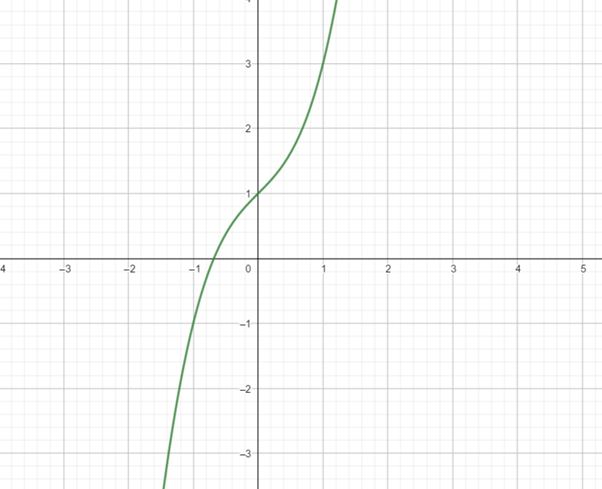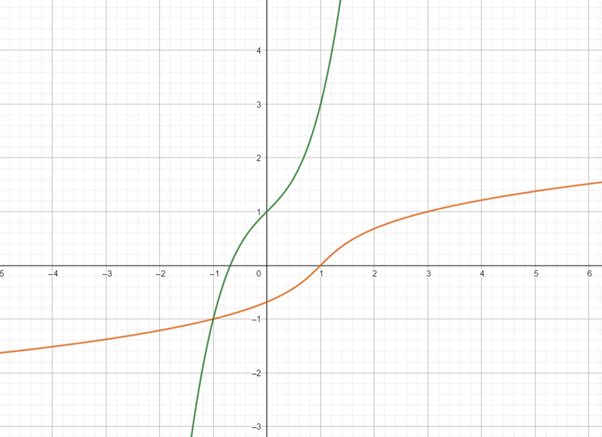
a.
To graph the function using graphing device.
a.
Explanation of Solution
Given information : Use graphing device to graph the function
Graph : Sketch the graph using graphing utility.
Step 1: Press WINDOW button to access the Window editor.
Step 2: Press
Step 3: Enter the expression
Step 4: Press GRAPH button to graph the function.
The graph is obtained as:

Interpretation :
From the above graph, it can be observed that the domain of
b.
To graph: the inverse function of
b.
Explanation of Solution
Given information :
The function is
Graph : the graph of the inverse function of a function is the reflection in the line of
Thus, the graph can be obtained as:

Interpretation: from the above graph it can be observed that the graph of function and inverse function are reflection of each other in the line of
c.
To state : that whether the inverse relation is an inverse function or not.
c.
Answer to Problem 107E
Yes, the inverse relation is an inverse function.
Explanation of Solution
Given information :
The function is
from the above graph shown in part (b) it can be observed that the graph of inverse function does not have any vertical line that intercept the graph more than one time, so the inverse function satisfy the vertical test.
So inverse relation is an inverse function or not.
Chapter 1 Solutions
EP PRECALC.GRAPHING APPR.-WEBASSIGN-1YR
 Calculus: Early TranscendentalsCalculusISBN:9781285741550Author:James StewartPublisher:Cengage Learning
Calculus: Early TranscendentalsCalculusISBN:9781285741550Author:James StewartPublisher:Cengage Learning Thomas' Calculus (14th Edition)CalculusISBN:9780134438986Author:Joel R. Hass, Christopher E. Heil, Maurice D. WeirPublisher:PEARSON
Thomas' Calculus (14th Edition)CalculusISBN:9780134438986Author:Joel R. Hass, Christopher E. Heil, Maurice D. WeirPublisher:PEARSON Calculus: Early Transcendentals (3rd Edition)CalculusISBN:9780134763644Author:William L. Briggs, Lyle Cochran, Bernard Gillett, Eric SchulzPublisher:PEARSON
Calculus: Early Transcendentals (3rd Edition)CalculusISBN:9780134763644Author:William L. Briggs, Lyle Cochran, Bernard Gillett, Eric SchulzPublisher:PEARSON Calculus: Early TranscendentalsCalculusISBN:9781319050740Author:Jon Rogawski, Colin Adams, Robert FranzosaPublisher:W. H. Freeman
Calculus: Early TranscendentalsCalculusISBN:9781319050740Author:Jon Rogawski, Colin Adams, Robert FranzosaPublisher:W. H. Freeman
 Calculus: Early Transcendental FunctionsCalculusISBN:9781337552516Author:Ron Larson, Bruce H. EdwardsPublisher:Cengage Learning
Calculus: Early Transcendental FunctionsCalculusISBN:9781337552516Author:Ron Larson, Bruce H. EdwardsPublisher:Cengage Learning





